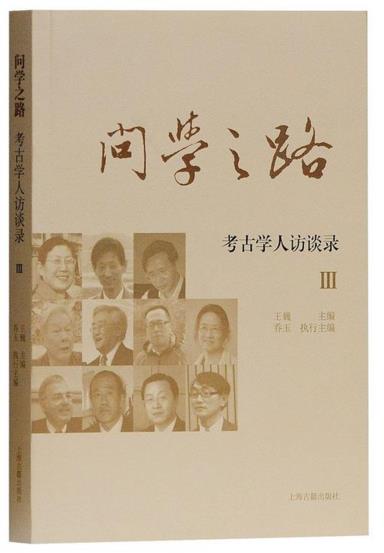Archaeologists: discovering mysteries

The Road to Discovery: Dialogues with Archaeologists III
Editor-in-chief: Wang Wei
Publisher: Shanghai Ancient Books Publishing House
Archeologists are generally mysterious figures in the public’s mind. They also face great mysteries—sometimes it seems they are guessing a riddle, but in the end they have to solve a puzzle. One can imagine how many puzzles must be solved if we want to use only pieces and remnants of the past to compile, construct and interpret the grand history of human civilization.
Some mysteries are small. The giant triangle stone tools that were commonly found in the lower reaches of the Yangtze River and dated back to the prehistoric era, which fascinated Liu Li, a professor of archaeology from the Center for East Asian Studies at Stanford Univeristy, —were they stone plows? Does rice unearthed from the Shangshan site from 9,000 years ago in Zhejiang Province show signs of artificial cultivation from a “spikelet axis?” Was the early Neolithic millstone used to mill millet, rice or acorns? Some mysteries are grand. As Gao Xing, a research fellow from the Institute of Vertebrate Paleontology and Paleoanthropology at the Chinese Academy of Sciences, wonders, did Chinese ancestors evolve continuously from native ancient humans, or were they from Africa about 200,000 years ago?
The most basic way to solve these mysteries is to sort out every specific clue from the field excavation. Zhao Hui, a professor from the School of Archaeology and Museology at Peking University, whose excavation of the Pu’an Bridge ruins of the Liangzhu culture has become a classic example. Zhao and his team only cleared 10 centimeters downwards in two months, and finally identified pillars and walls of Liangzhu people’s houses. Zhu Hong, dean of the Frontier Archaeology Research Center at Jilin University, presided over the establishment of China’s first ancient DNA laboratory for archaeology and opened a “time capsule” that was dust-laden for thousands of years with cutting-edge technology.
Reconstructing the history of our civilization requires both physical data and metaphysical theoretical thinking. Lin Yun, a professor from the College of Humanities at Jilin University, expounded upon the role of military power in the formation of royal power from the shape of the “king” character in bronze inscriptions. Also, Zhao’s insight into the characteristics of Liangzhu culture has led to his advocacy of conducting historicism research on the prehistoric cultures in various regions. The important discoveries along the banks of the Huaihe River and in the Yuhui Village at the foot of the Tushan Mountains stimulated the exploration of Li Boqian, former dean of the School of Archaeology and Museology at Peking University, of the relationship between archaeological research and ancient legends, such as the “King Yu met his dukes on the Tushan Moutain.”
Archaeologists also have special qualities endowed by the special discipline of archaeology. The love for field life, the persistence of objective research based on basic materials, the straightforwardness and magnanimity in academic discussion and real life. Another example is the sense of mission of protecting cultural heritage and promoting a splendid civilization. Lin’s respect for senior researchers and the “chivalry” extended to his classmates represent the “family style” of the Department of Archaeology at Jilin University, which is a valuable tradition in archaeology field.
(edited by SUI JINGJING)
